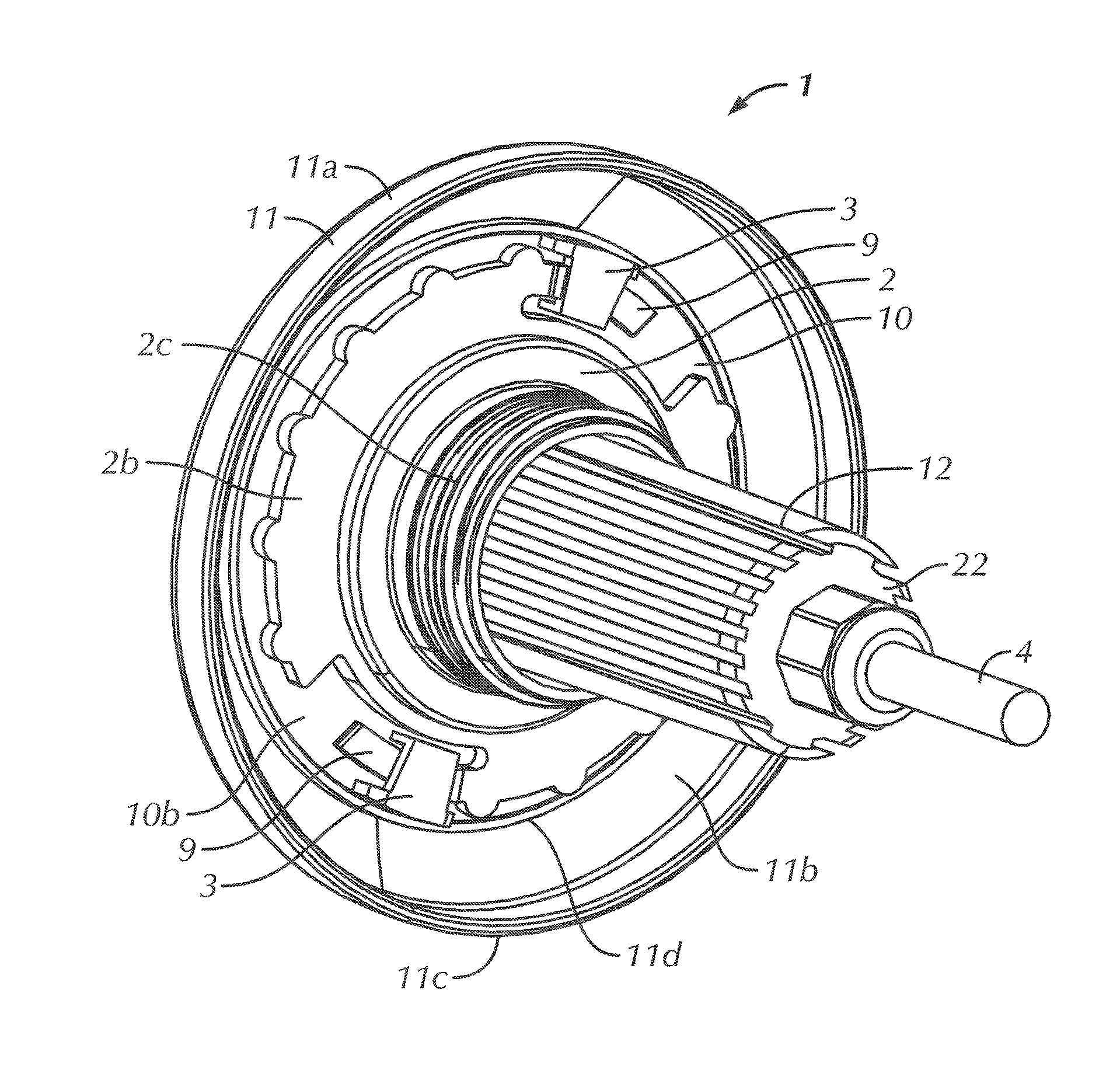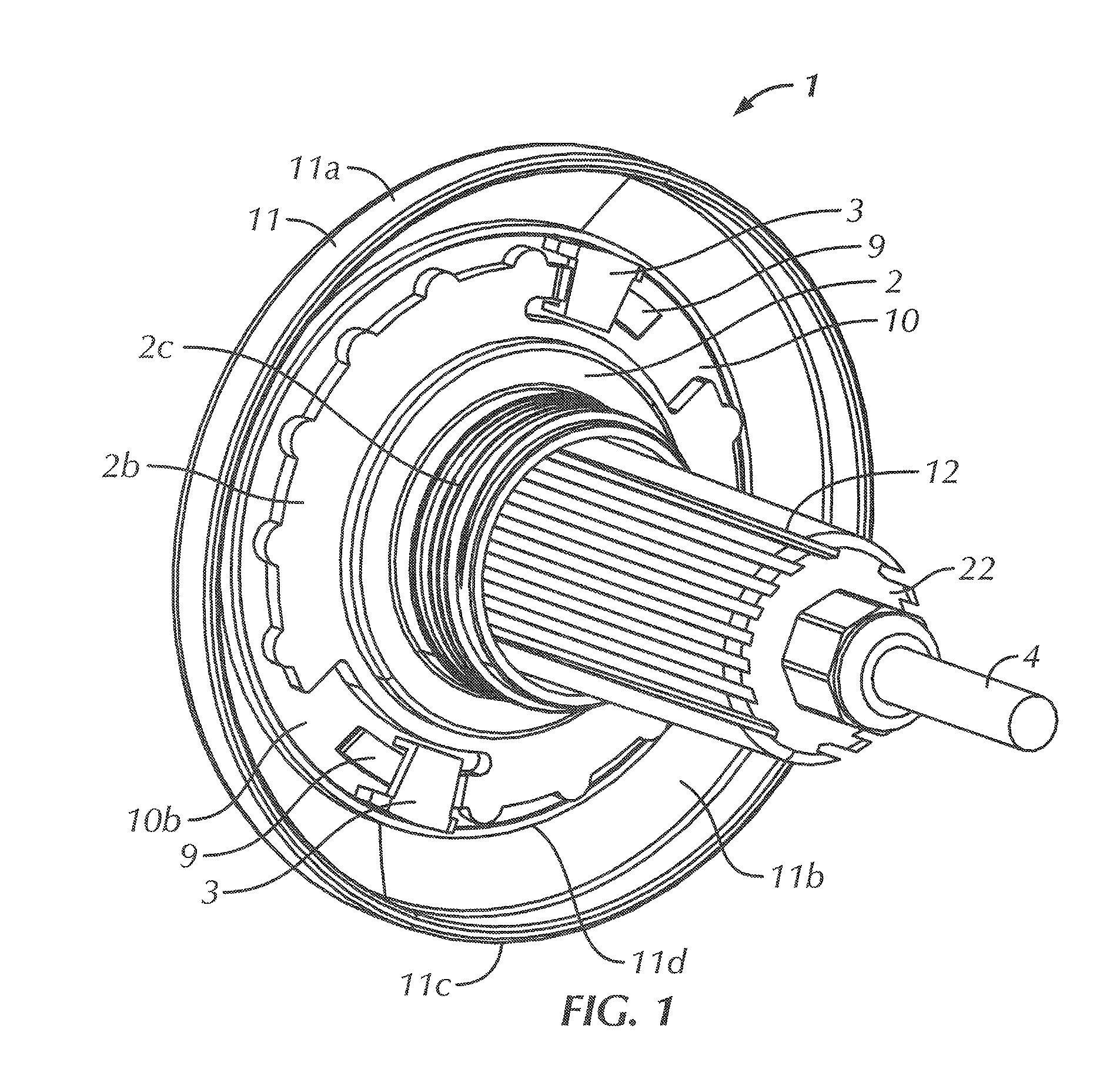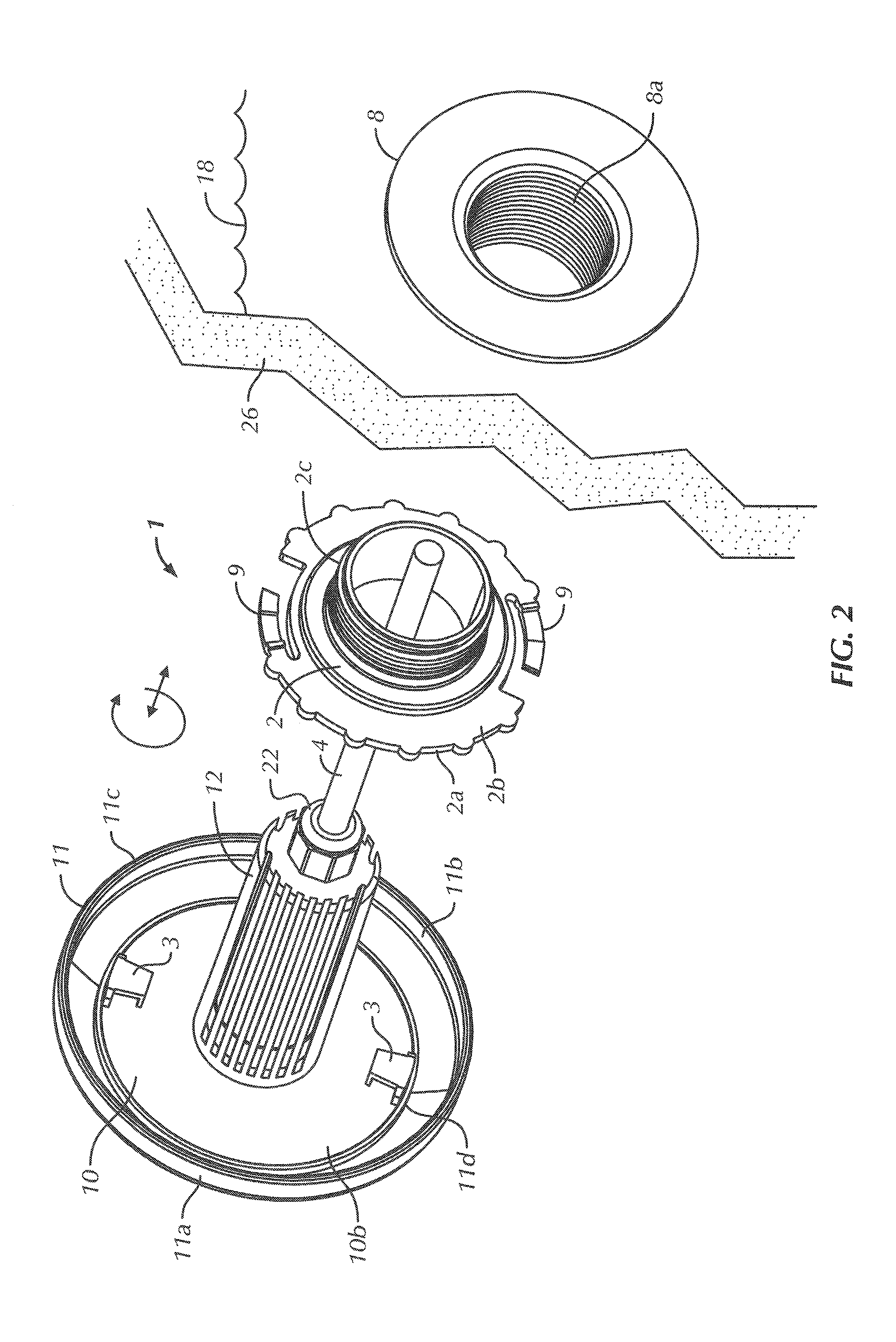Underwater and landscape lighting system
a lighting system and landscape technology, applied in outdoor lighting, outdoor lighting, lighting applications, etc., can solve the problems of led elements failing after a shorter operating life, large amount of heat generated by lighting elements, and degradation of the performance and longevity of lighting systems, so as to reduce the risk of led elements failing, the effect of dissipating heat generated
- Summary
- Abstract
- Description
- Claims
- Application Information
AI Technical Summary
Benefits of technology
Problems solved by technology
Method used
Image
Examples
Embodiment Construction
[0018]Certain terminology is used in the following description for convenience only and is not limiting. The words “right,”“left,”“lower,” and “upper” designate directions in the drawings to which reference is made. The words “inwardly” or “distally” and “outwardly” or “proximally” refer to directions toward and away from, respectively, the geometric center or orientation of the device and instruments and related parts thereof. The terminology includes the above-listed words, derivatives thereof and words of similar import.
[0019]Although the present invention can be used in conjunction with any type of indoor or outdoor application, it is especially suited for underwater lighting applications in connection with pools, spas, baths, fountains, aquariums and the like. Accordingly, the present invention will be described herein with reference to swimming pool applications, particularly for mounting the lighting system to a standard one and one-half inch (1.5″) threaded pool fitting. How...
PUM
 Login to View More
Login to View More Abstract
Description
Claims
Application Information
 Login to View More
Login to View More - R&D
- Intellectual Property
- Life Sciences
- Materials
- Tech Scout
- Unparalleled Data Quality
- Higher Quality Content
- 60% Fewer Hallucinations
Browse by: Latest US Patents, China's latest patents, Technical Efficacy Thesaurus, Application Domain, Technology Topic, Popular Technical Reports.
© 2025 PatSnap. All rights reserved.Legal|Privacy policy|Modern Slavery Act Transparency Statement|Sitemap|About US| Contact US: help@patsnap.com



